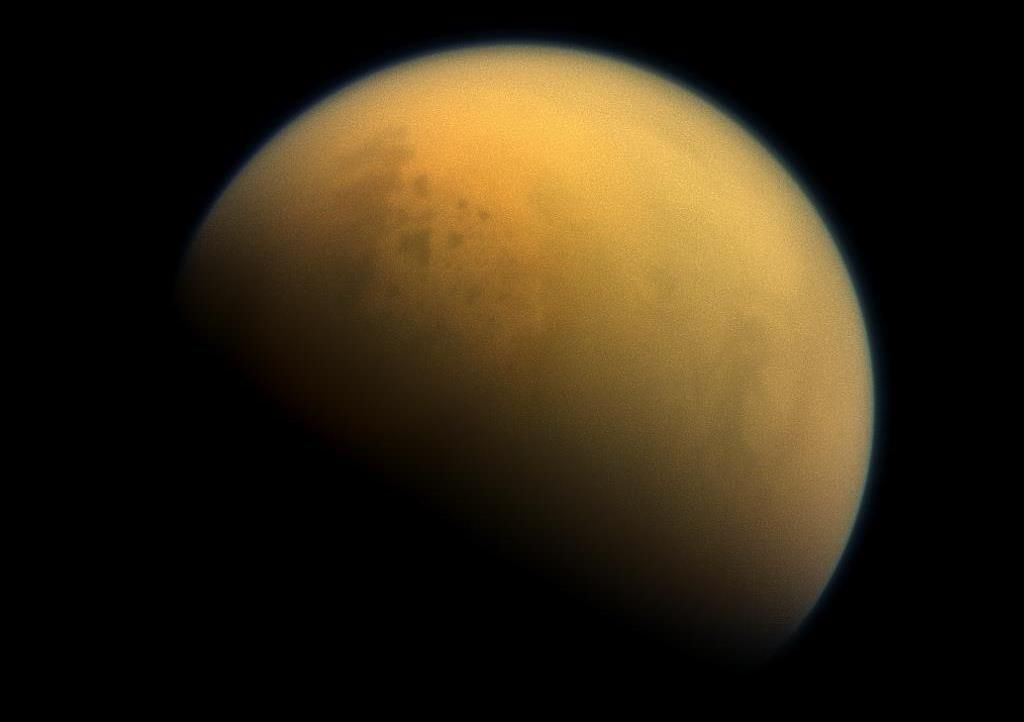
There's a giant icy cloud of, among other chemicals, cyanide looming high above the south pole of Saturn's largest moon, Titan. And if that's not bad enough, the cloud's birth caused a cold snap that lasted four long years, according to a new paper published in the journal Nature Communications.
"This effect is so far unique in the solar system and is only possible because of Titan's exotic atmospheric chemistry," lead author Nick Teanby, a planetary scientist at Britain's University of Bristol, said in a press release. However, just because it's the first time we've seen the phenomenon doesn't mean it will be the last. A similar process could play out on exoplanets beyond our solar system, according to Teanby.
Titan, as Saturn's largest moon, has fascinated scientists ever since Cassini, the spacecraft that recently met its end in Saturn's atmosphere, plopped a lander named Huygens onto the moon in January 2005. That mission let scientists see underneath the moon's thick, planet-like atmosphere, a feature no other moon in our solar system can boast of.
But wanting to peek below an atmosphere doesn't negate scientists' interest in studying the atmosphere itself, and particularly not when they started seeing something very strange in 2012: a sharp cooling at the moon's south pole where they had expected to see a hot spot forming.
The plot thickened when they realized that high-altitude clouds above the pole were full of hydrogen cyanide and benzene, neither of which you want to encounter. Hydrogen cyanide "can be rapidly fatal," the U.S. Centers for Disease Control and Prevention explains, and has been used as a chemical weapon. Benzene is only slightly less nasty: It's flammable and can cause cancer.
Related: New Horizons: Pluto is way colder than it should be, and scientists now know why
Scientists couldn't figure out how those toxic clouds formed, particularly in a place where there should have been a heat wave. In the new paper, Teanby and his colleagues calculate that they could have been formed by a combination of long-wave radiative cooling and seasonally reduced exposure to sunlight forming a special type of atmospheric system called a polar vortex. Once gases are trapped in that vortex, it's easier for them to stay isolated and therefore stay cold.
The temperatures at Titan's south pole have since rebounded, with the winter fading away last year after the vortex fell apart. But without the trusty Cassini spacecraft taking measurements, scientists may not be able to determine whether the phenomenon returns.
Uncommon Knowledge
Newsweek is committed to challenging conventional wisdom and finding connections in the search for common ground.
Newsweek is committed to challenging conventional wisdom and finding connections in the search for common ground.
About the writer
Meghan Bartels is a science journalist based in New York City who covers the science happening on the surface of ... Read more
To read how Newsweek uses AI as a newsroom tool, Click here.








